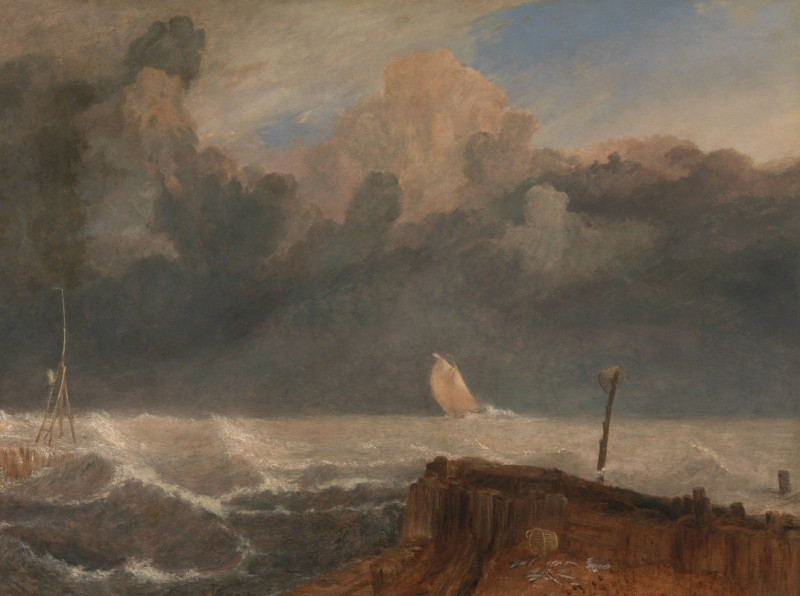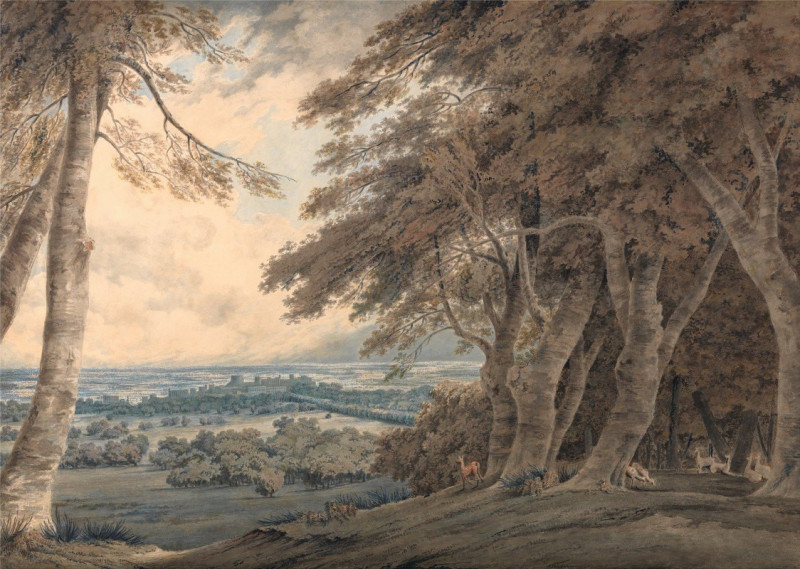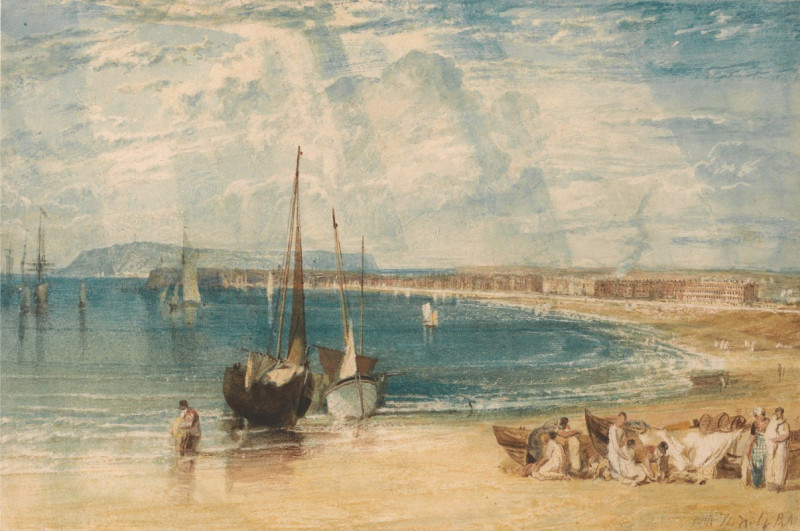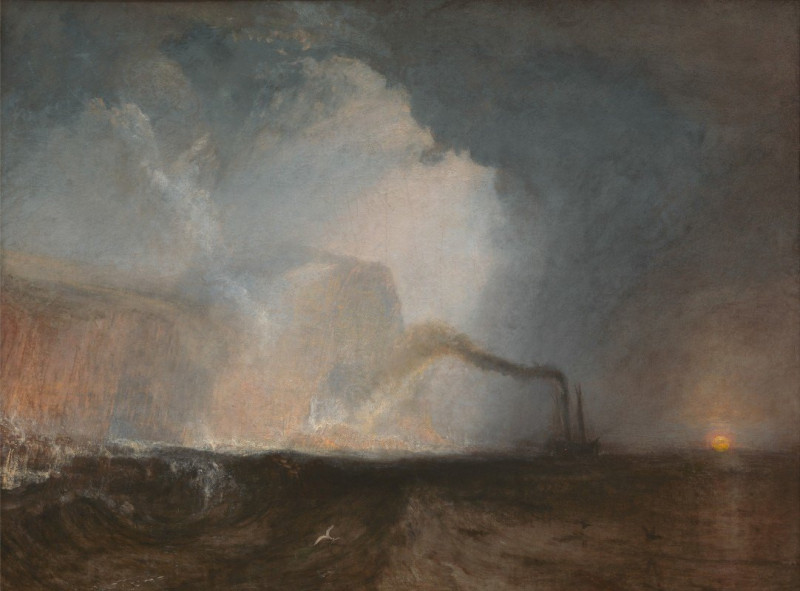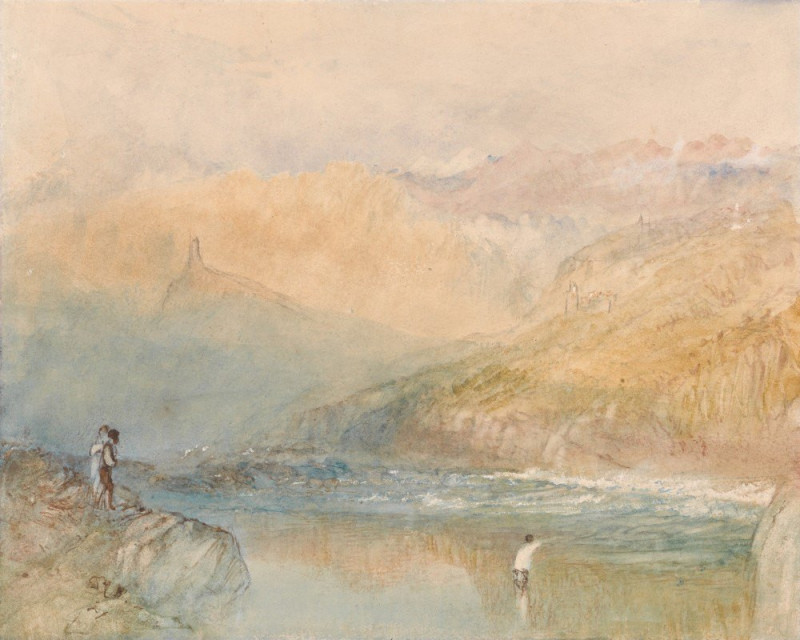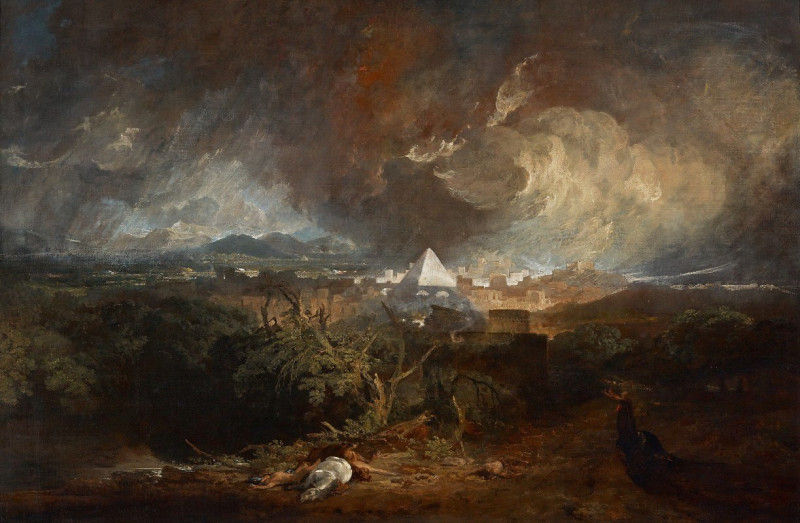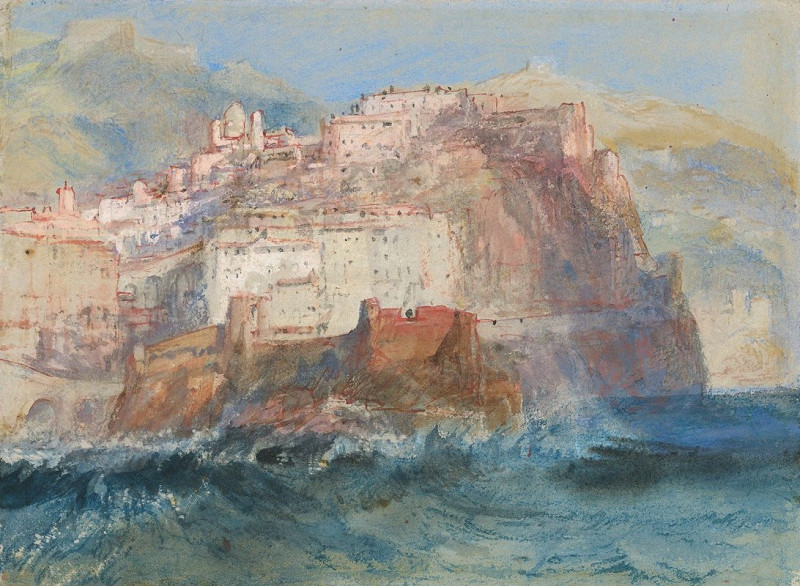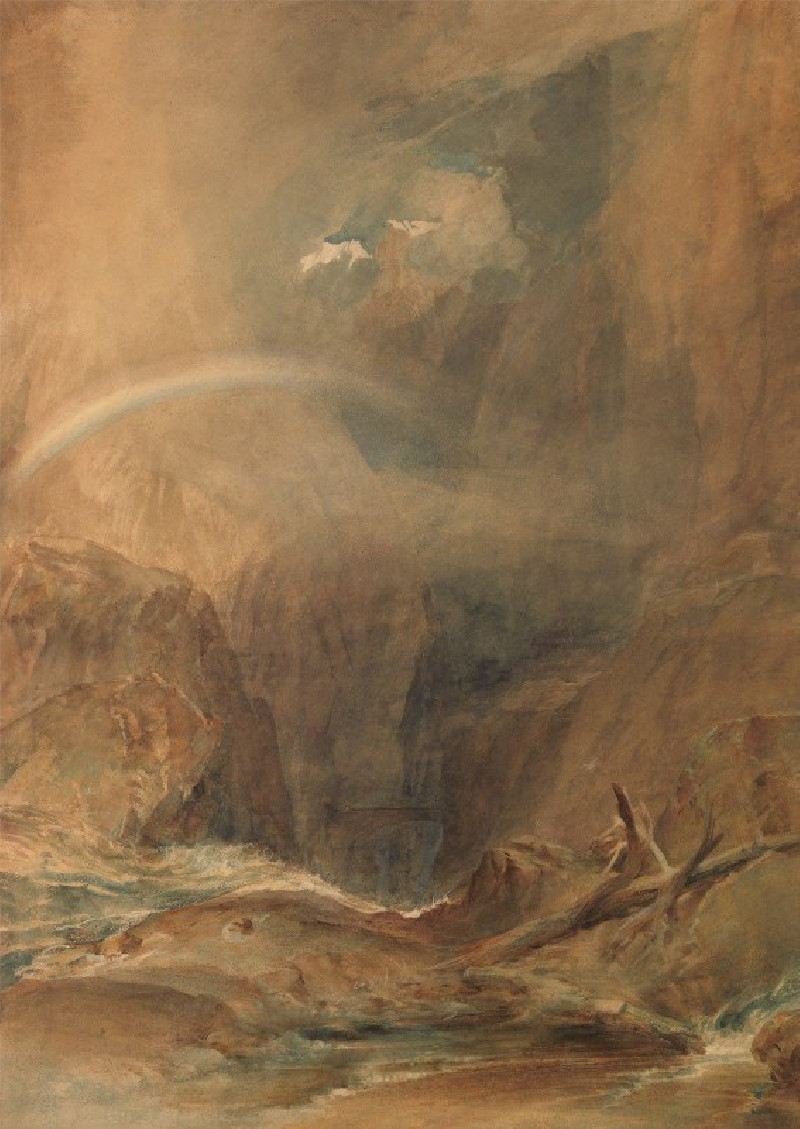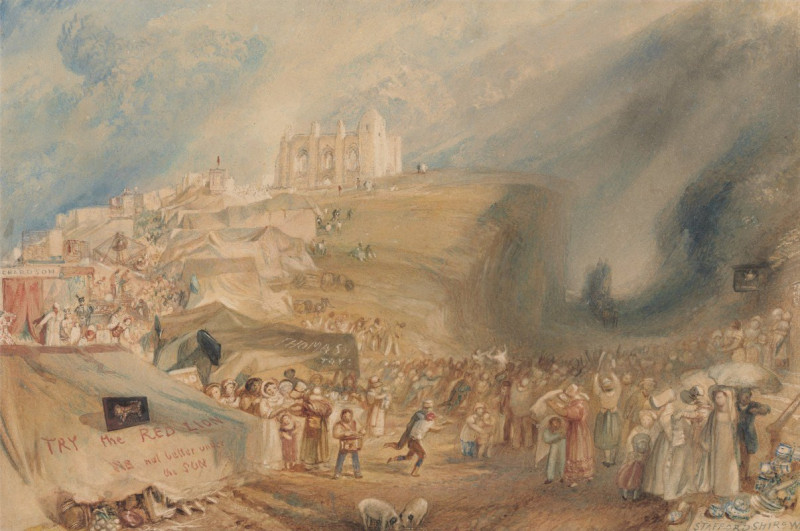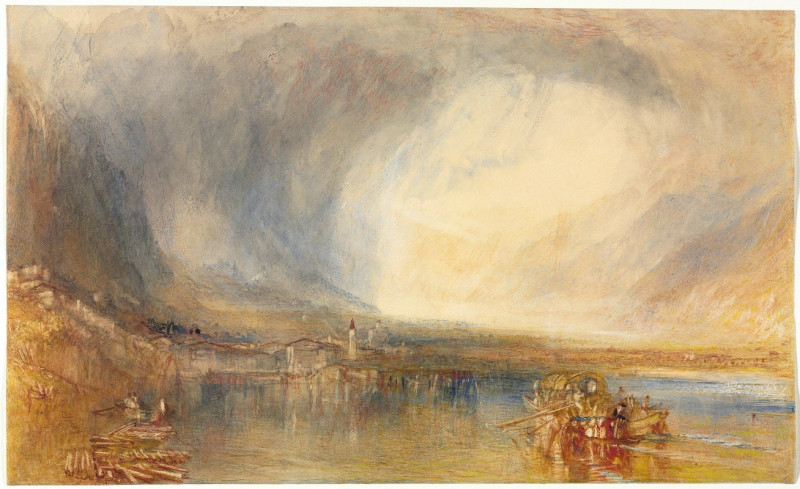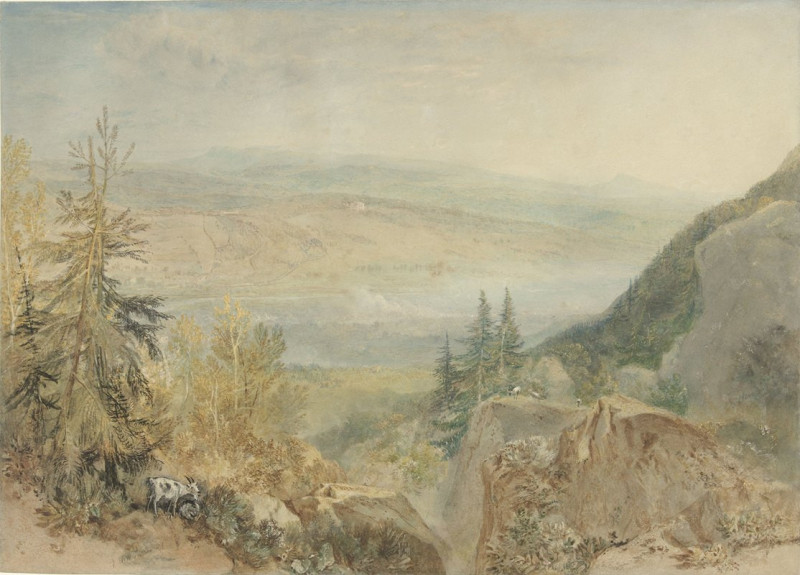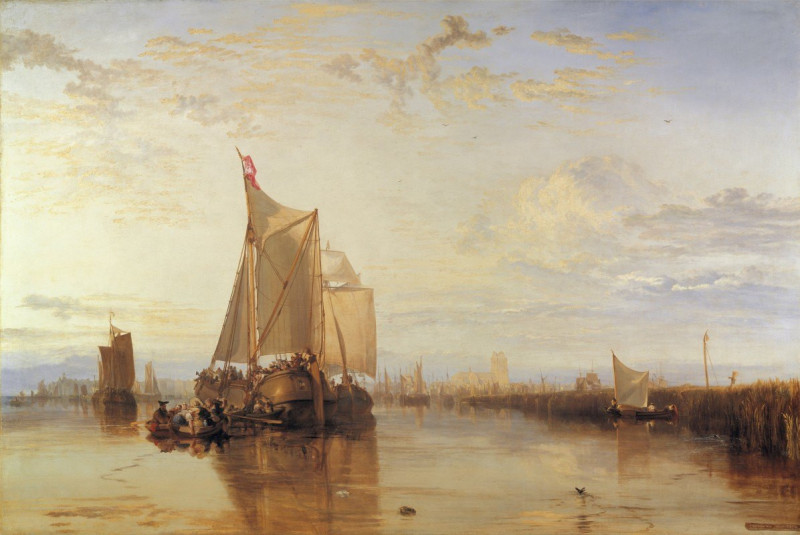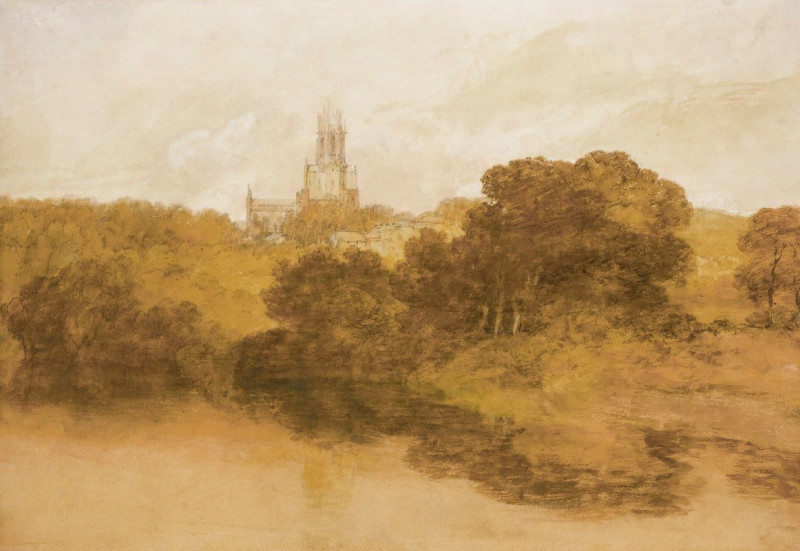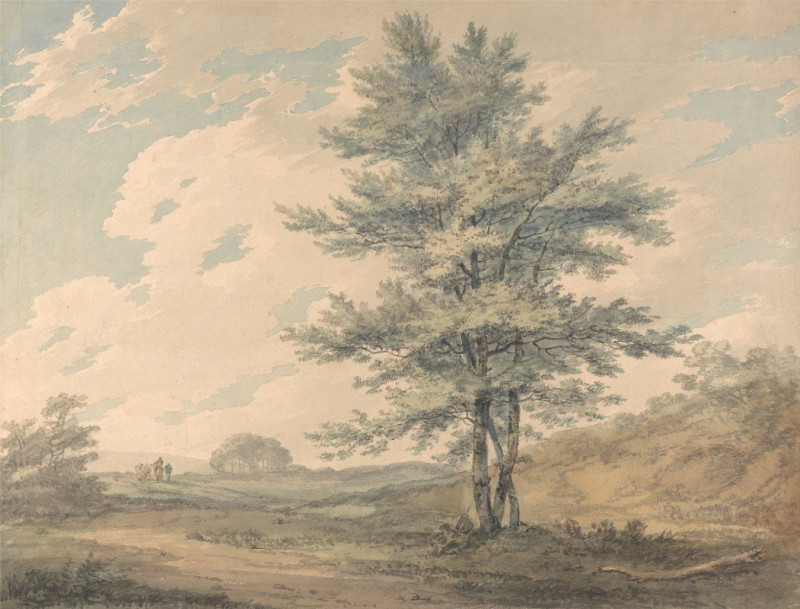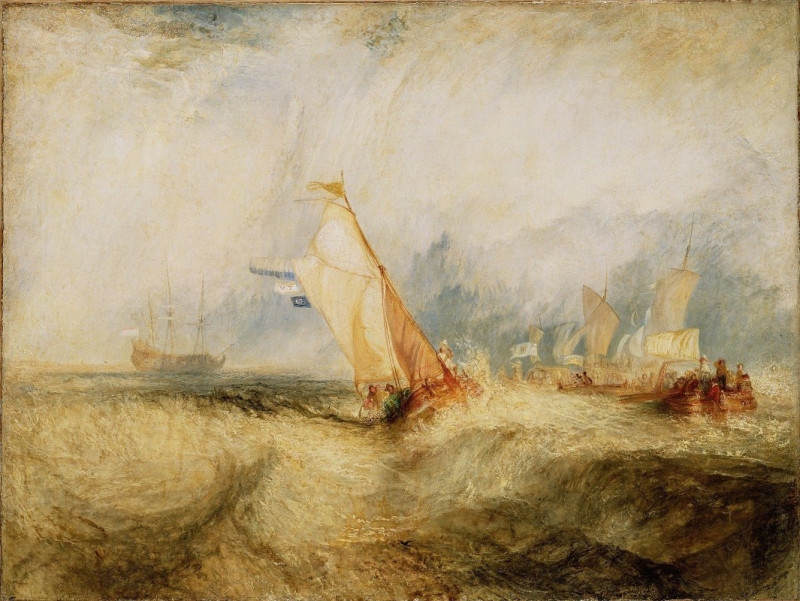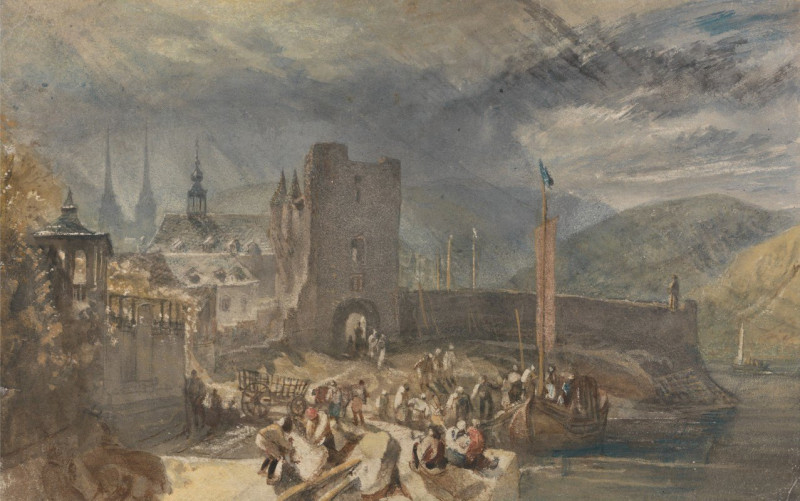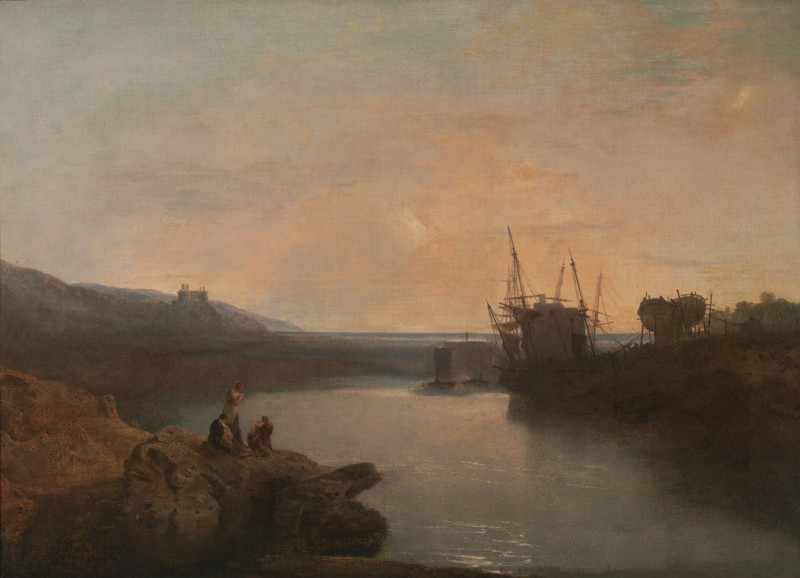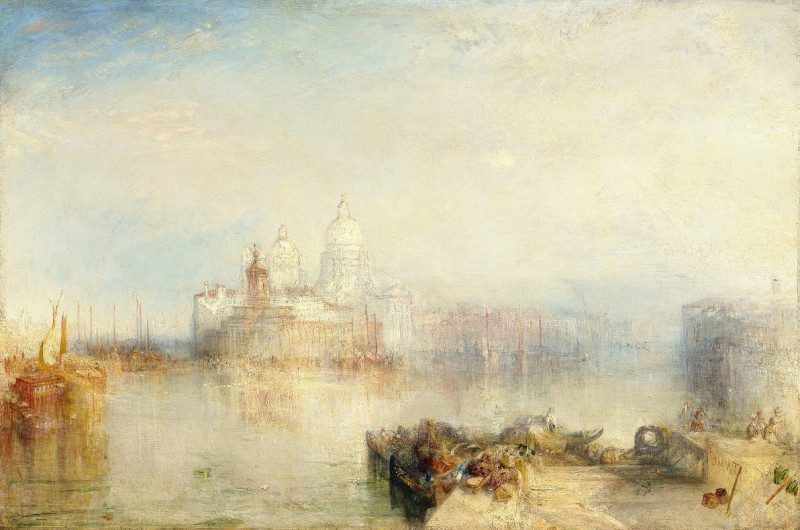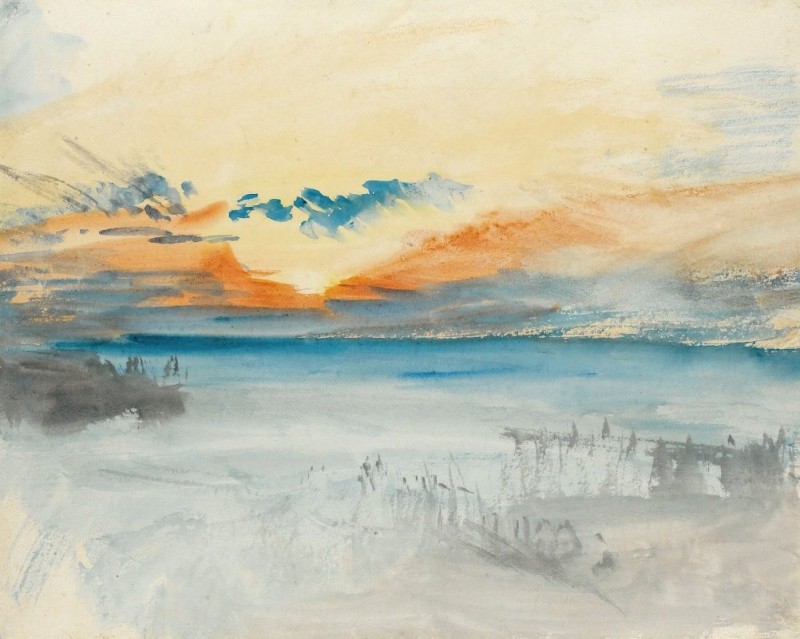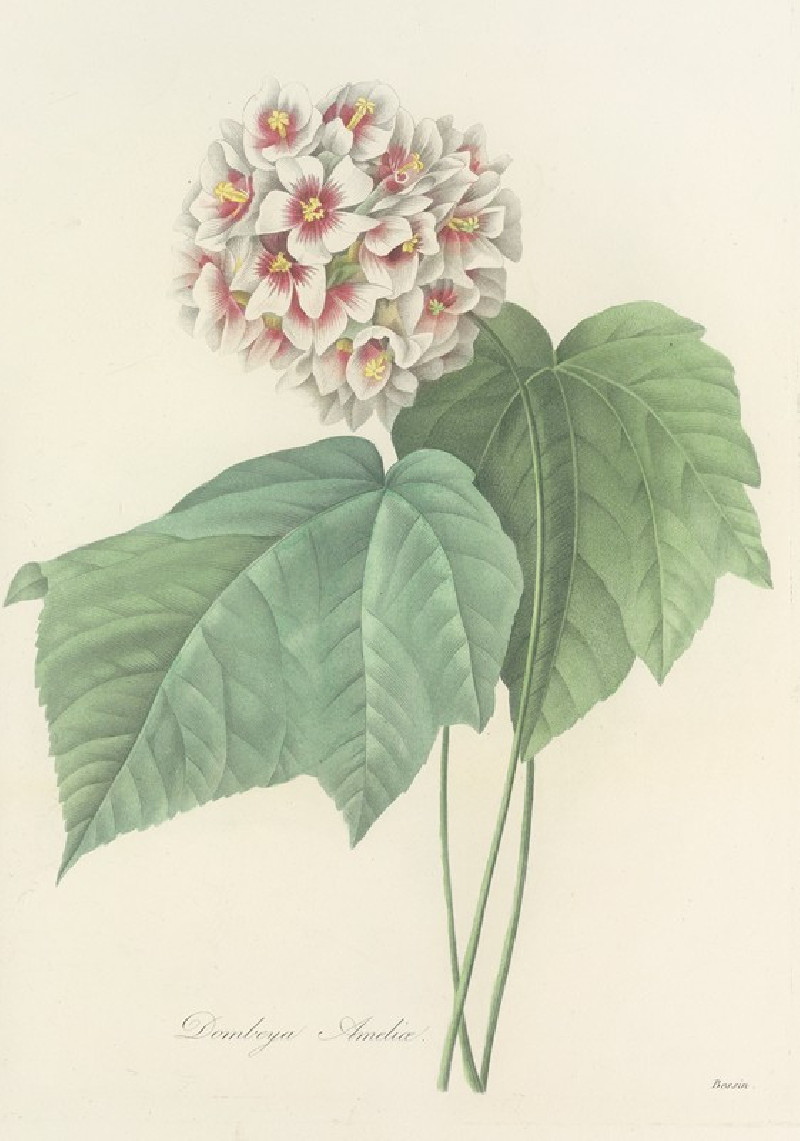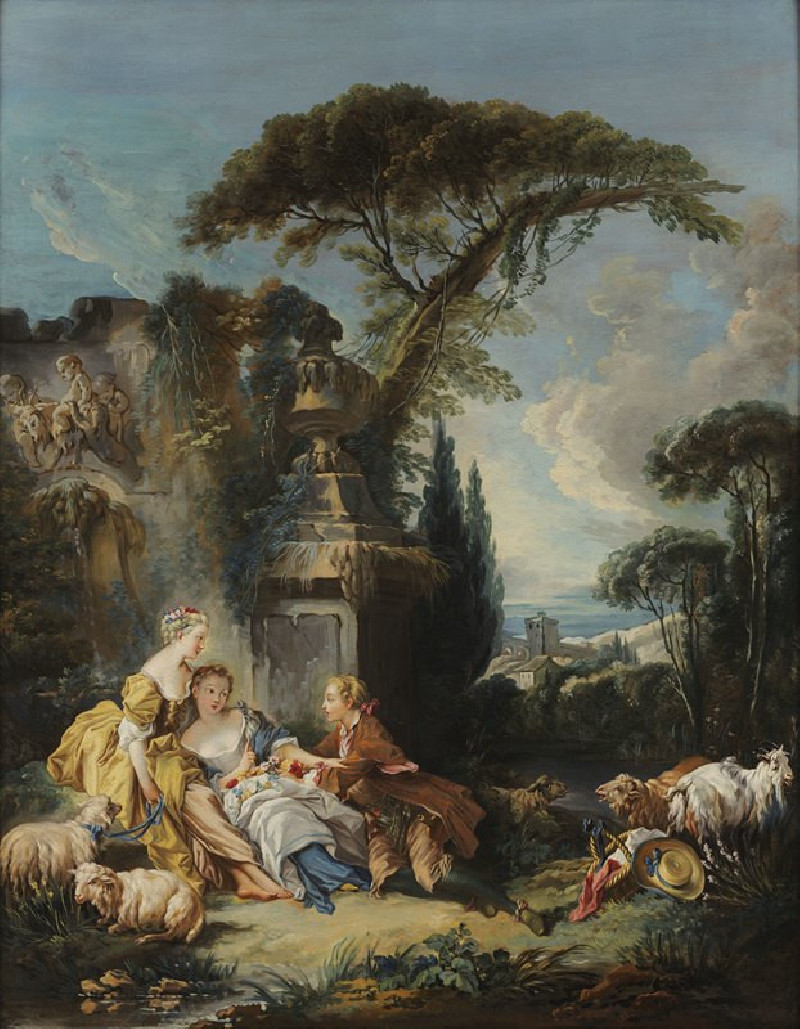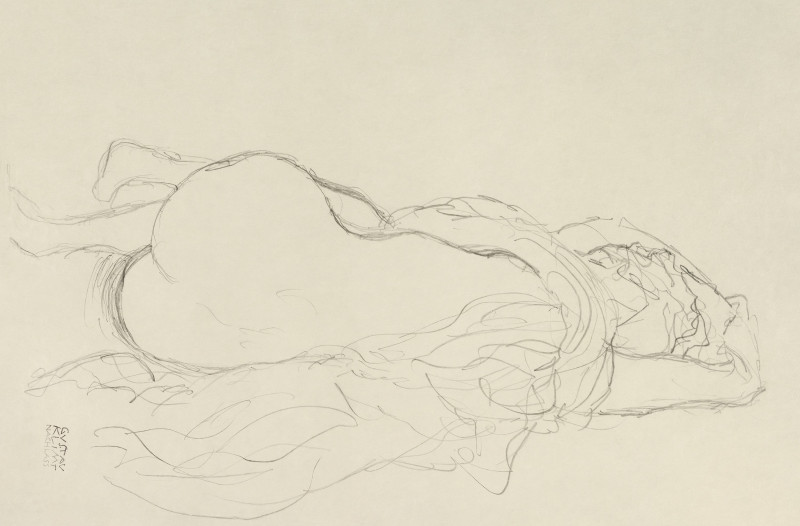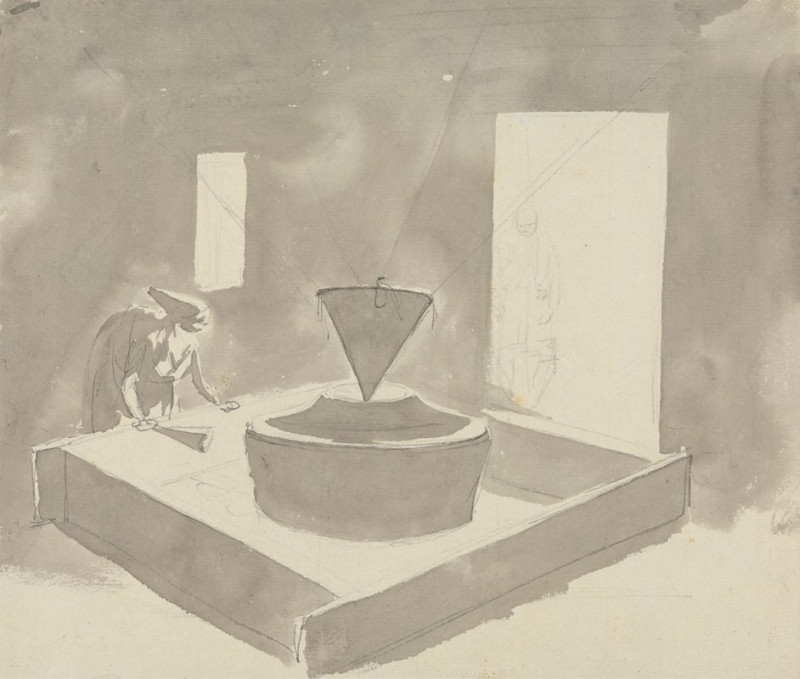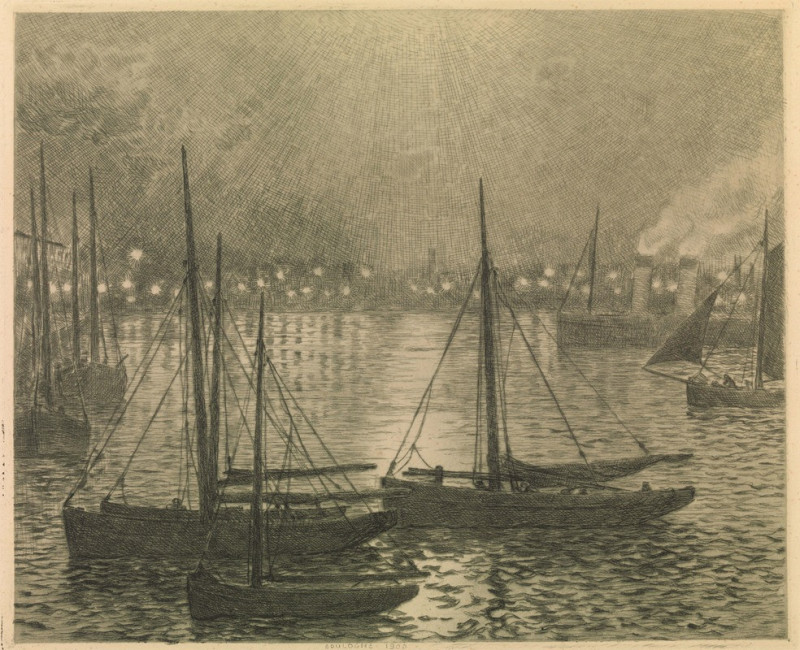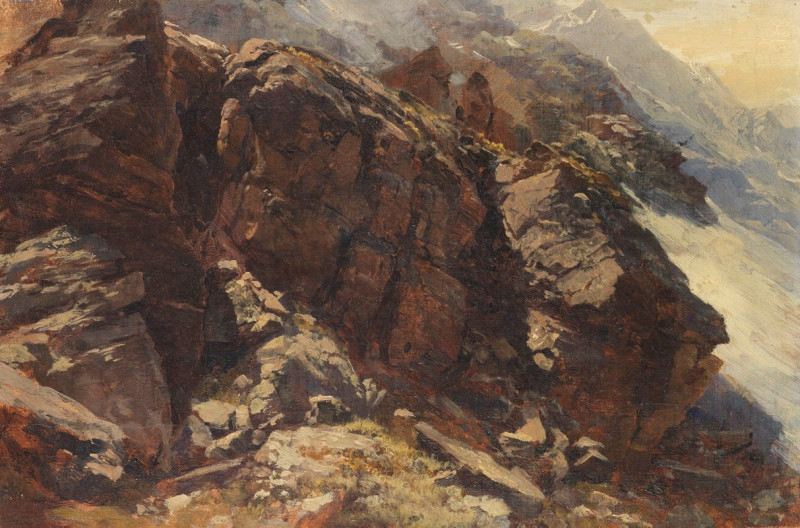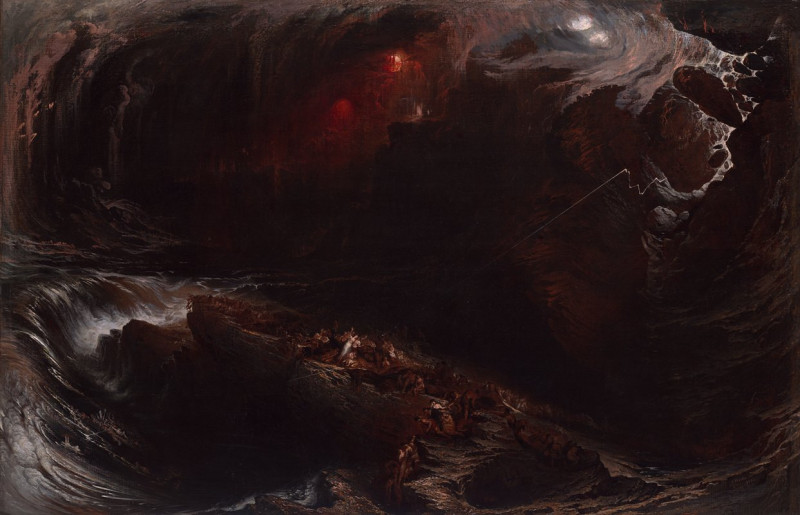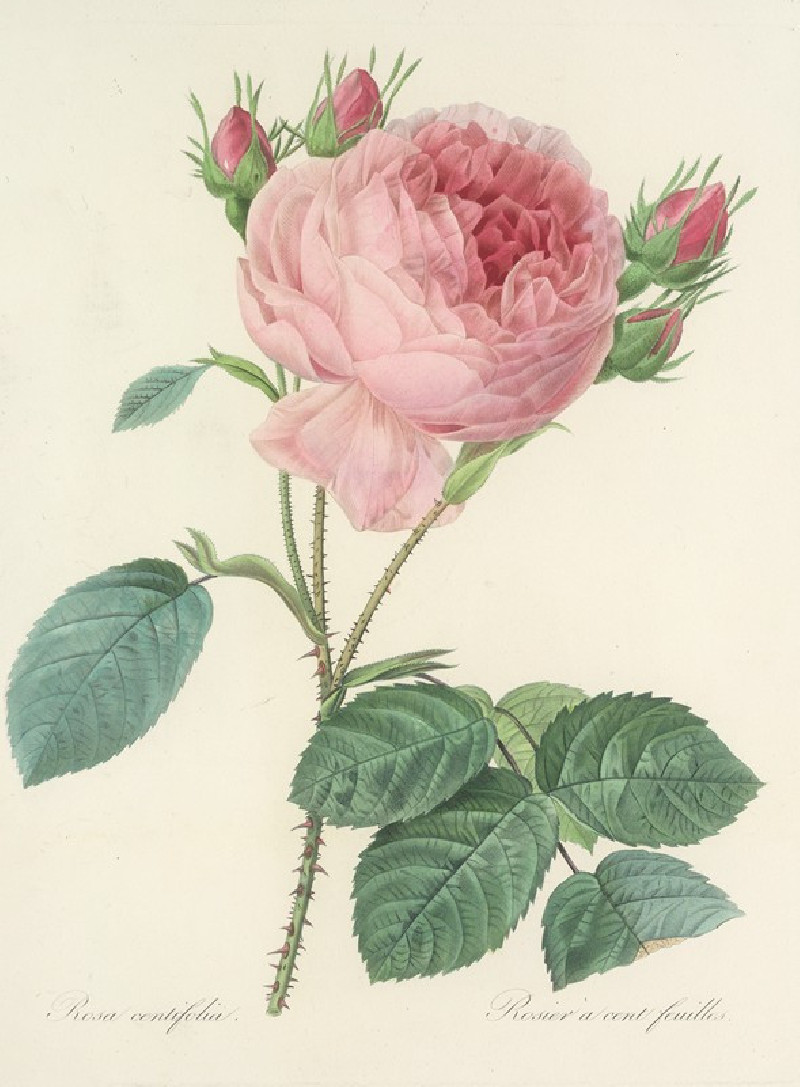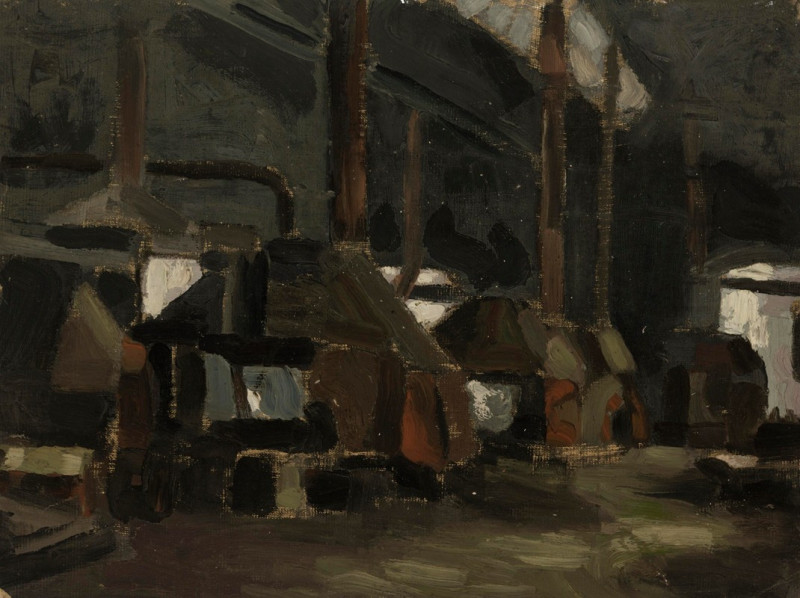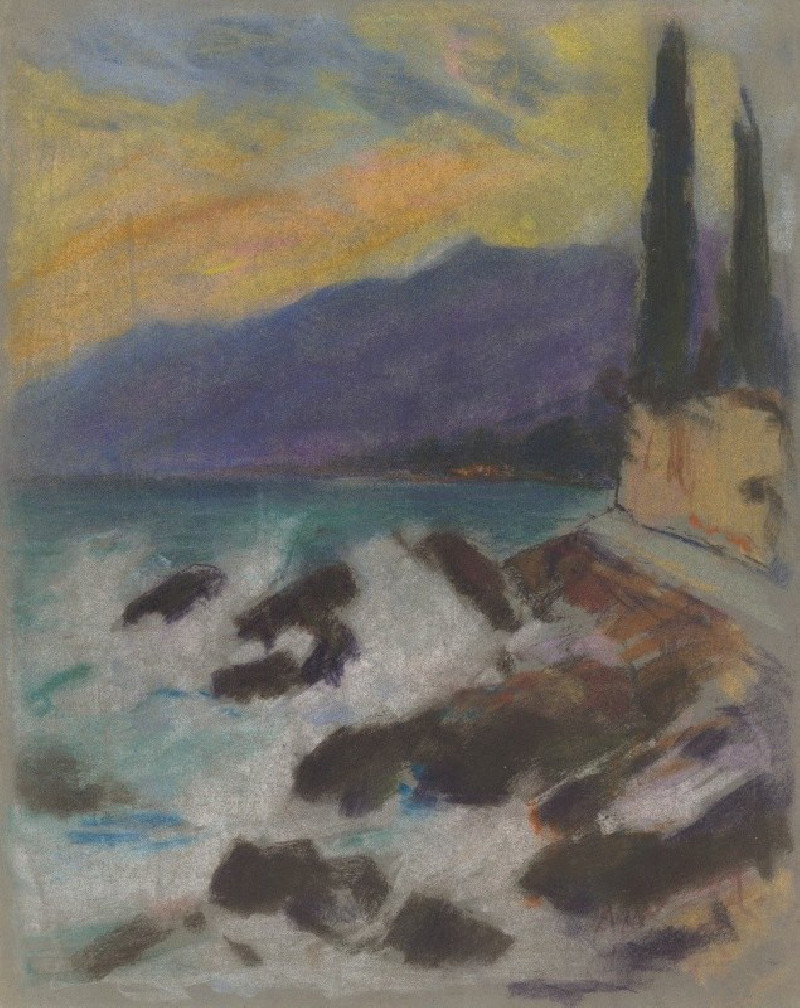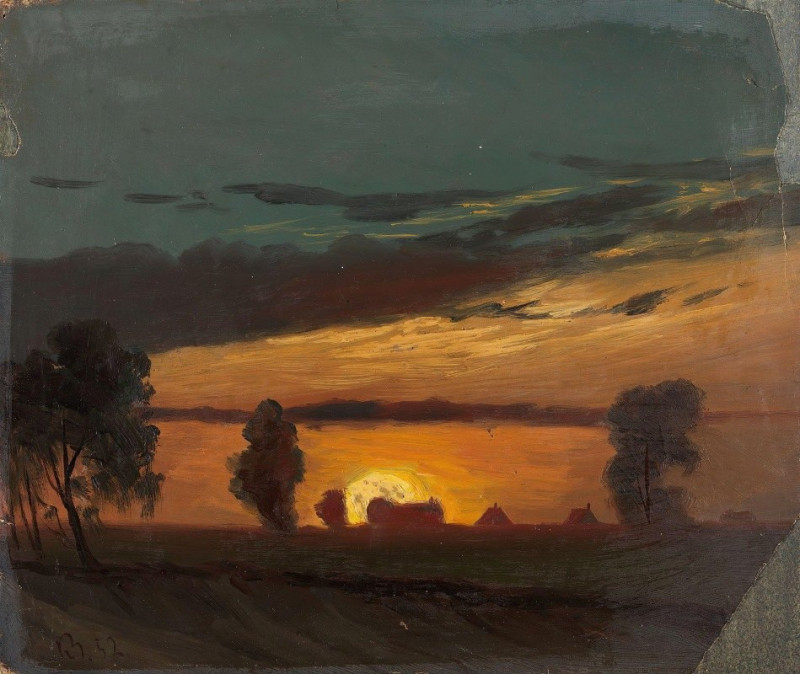Buildings Overlooking Water, near Naples (ca. 1796)
Technique: Giclée quality print
Recommended by our customers
More about this artwork
1796)Experience the calm and contemplative beauty of Joseph Mallord William Turner's "Buildings Overlooking Water, near Naples," a superb example of Turner's mastery in capturing the ethereal and atmospheric qualities of a landscape. Created around 1796, this artwork transports viewers to the tranquil shores near Naples, a location cherished for its historic charm and scenic beauty.In this painting, Turner presents an enchanting vista where the serene waters mirror a gracefully aged structure, possibly a remnant of an aqueduct or an old palatial edifice, harmonizing with the surrounding lush landscape. The building's imposing facades, adorned with classic architectural details, stand as a testament to a bygone era, creating a stark contrast against the soft and fluid brushstrokes that depict the foliage and the water.Turner's use of muted watercolors suggests the haze of a warm, sunny day, with light filtering through the clouds and casting gentle shadows. The composition is balanced delicately with tall, slender trees — likely cypresses — that add a vertical lift to the horizontal expanse of the aqueduct and the calm water.This artwork not only reflects Turner's profound appreciation for the landscapes of southern Italy but also showcases his exceptional ability to convey mood and atmosphere. The delicate play of light and shadow, combined with a masterful use of perspective, invites the viewer to pause and reflect, almost feeling the gentle breeze that stirs the leaves and ripples the water.
Delivery
Returns
Joseph Mallord William Turner RA, known in his time as William Turner, was an English Romantic painter, printmaker and watercolourist. He is known for his expressive colourisations, imaginative landscapes and turbulent, often violent marine paintings. He left behind more than 550 oil paintings, 2,000 watercolours, and 30,000 works on paper. He was championed by the leading English art critic John Ruskin from 1840, and is today regarded as having elevated landscape painting to an eminence rivalling history painting.


